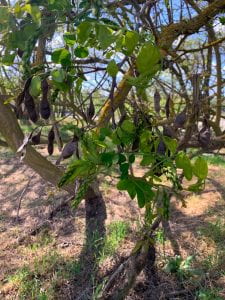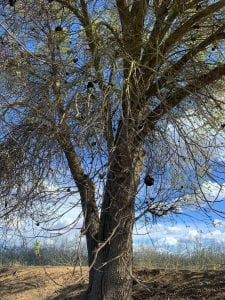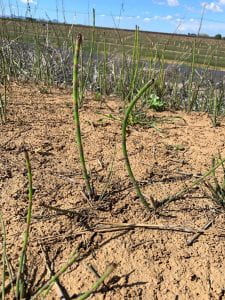Date: 03/26/2020 (TIME: 3:22pm (PST))
Location: (39.0079,-121.5788)
Site Description: On the edge of the Feather River, in Northern California, habitat to striper bass, smooth horsetails, black walnut trees, and a type of pea growing tree, could be in the robinia pseudoacacia(black locust) family. Few fishermen, and shallow river. This site has a steep dirt side on the river’s edge probably due from the flood from the Oroville dam. Around the area is agriculture, across the river on the eastern side, there are large amount of agriculture, walnut factory, orchards, and plowed land. The number of trees around the rivers edge is the riparian zone, in addition to the riparian zone there is a levy between the river and the agricultural farms, to stop agricultural pollution the river. The leavy could also be to stop the river if it over flows.
Species account: This location has no written history of biodiversity within this area, however, from previous experience there has been signs of garden snakes,(black with a stripe of yellow) as well as coyotes, and amphibians such as frogs. Besides the riparian zone there are open fields however, most of the land has been occupied with human activity such as farms, factories, roads, boat ramps, and parking lots. Not any animals in sight at the time of exploration as well as no data to find on the internet about species and land history.
Narrative: The trip was a fairly sunny with a few clouds, I walked in between orchards to get to the “star bend” which was the name of the entrance of the river for parking, and launching boats. The road to enter the river was closed however, few people still walking on the levy near the river. I saw many plant species that were very interesting, most of the trees were majority dead, but few started to grow new branches and leaves because of the better weather. There were few fishermen and a one abandoned pipe building that went to the river. It looked like a source of water for the agricultural community where they can intake water and out put waste however it has been discontinued. There was a Bee Farm between a walnut factory and the riparian zone.

Image 1: Black Locust This tree was found in the riparian zone of the river, it was hard to identify on the inaturalist app however the black locust looks the most similar to this species. There is no history about this location to confirm.

Image 2: Black Walnut Tree. This species was found isolated .25 miles away from the river. It was also hard to identify, inaturalist did not find any similar species of this kind. this tree produced burnt/black looking hulls that were hallow and extremely hard. my best conclusion was a Juglans Nigra (eastern black walnut tree). There is no history about this location to confirm.

Image 3: Smooth Horsetail. This species was found .35miles away from the river near a swampy stream full of algae. the stream is most likely created from run off coming from orchards.
